All about mineral fertilizers
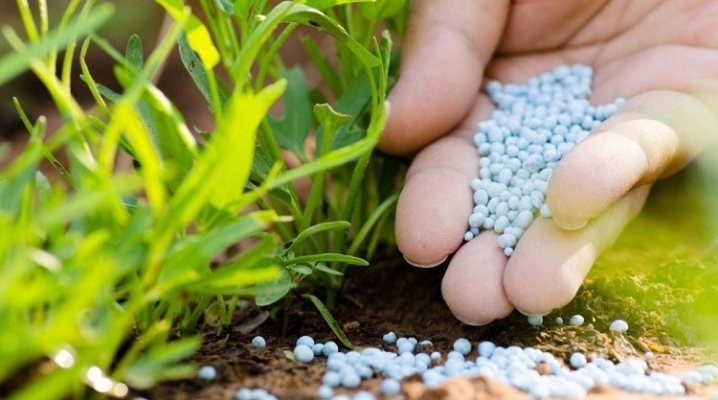
Any plant, regardless of the place where it will be grown, requires feeding. Recently, mineral fertilizers have become especially popular, which, if necessary, can easily replace organic ones.
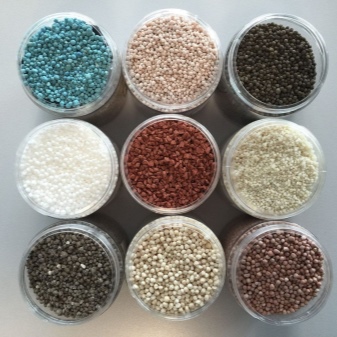

What it is?
Mineral fertilizers are compounds of inorganic origin, which contain all the necessary nutrients in the form of mineral salts. The technology for their application is simple. Such fertilizers are one of the main techniques in agriculture, because thanks to the properties of such substances, it is possible to significantly increase the yield.
From what elements are included in the fertilizer, they can be divided into simple and complex. The former contain only one nutritional element. These include not only potash, nitrogen or phosphorus, but also micronutrient fertilizers. The latter are called complex by many for the reason that they contain two or more nutrients.
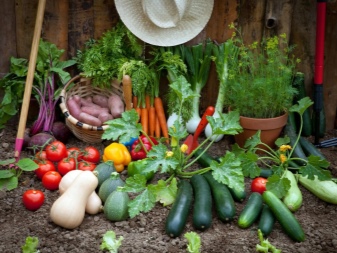
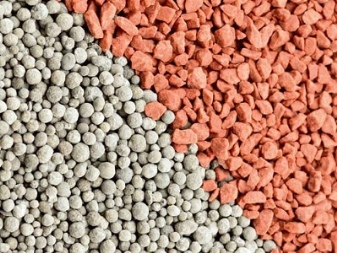
Advantages and disadvantages
Mineral dressings are used in agriculture, where they are valued not only for their wide spectrum of action, but also for their availability. but before buying such fertilizers, it is imperative to find out both their disadvantages and their advantages.
Advantages
To begin with, it is worth considering all the positive about such substances:
- the effect of mineral fertilizers is instantaneous, which is very important, especially in emergency cases;
- after application, the result is immediately noticeable;
- plants develop resistance to harmful insects, as well as diseases;
- can act even at sub-zero temperatures;
- at a reasonable cost, fertilizers are of high quality;
- easily and easily transported.
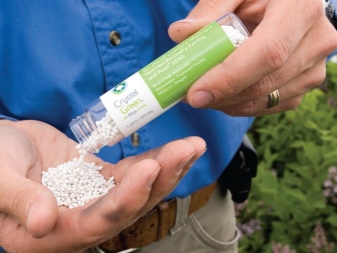

disadvantages
Despite the large number of advantages, many gardeners and gardeners believe that chemical fertilizers have a negative impact on human health. However, in reality this is not the case. Only products, in the manufacture of which production technologies were violated, turn out to be harmful. In addition, if the dosage is correctly calculated, the yield will be high. But there are also a few more disadvantages:
- some plants cannot fully assimilate chemicals that, for this reason, remain in the ground;
- if you do not follow the rules in the production of fertilizers, they can harm all living things nearby.
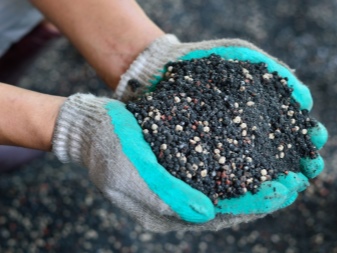
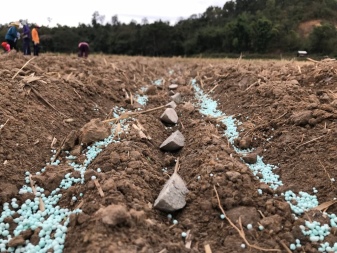
How are they different from organic ones?
The main difference between mineral and organic fertilizers is that the former are made chemically, while the latter are obtained from the remains of vegetation, as well as animal and bird faeces. Besides, organic substances act very slowly, which means that their effect is longer.
Chemical fertilizers work quickly and are much less required.

Production technology
If all manufacturing rules are followed during production, the yield can increase by 40-60%, and the quality of the product will be high. Fertilizers are usually produced in solid or liquid form. Liquid substances are easier to manufacture, but such chemicals require special transportation, as well as a special warehouse for storage.
Solid fertilizers are most often granulated for safe and convenient transportation. The manufacturing method is quite simple, because chemical synthesis is used here. Most often, potash or phosphorus fertilizers are made in this way.
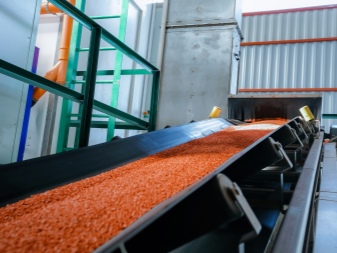
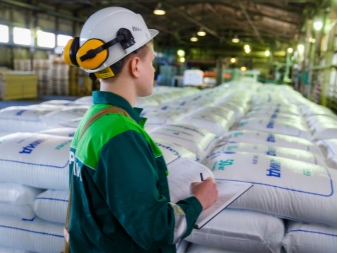
Views
All fertilizers can be divided according to their composition and form of release.
By composition
Any fertilizers, regardless of whether they are organic or mineral, are divided into different categories. The classification is simple. First of all, they can be simple and complex. The first ones can only provide one element. As for complete fertilizers, they may contain several components at the same time. To understand their actions, you need to read their characteristics separately.
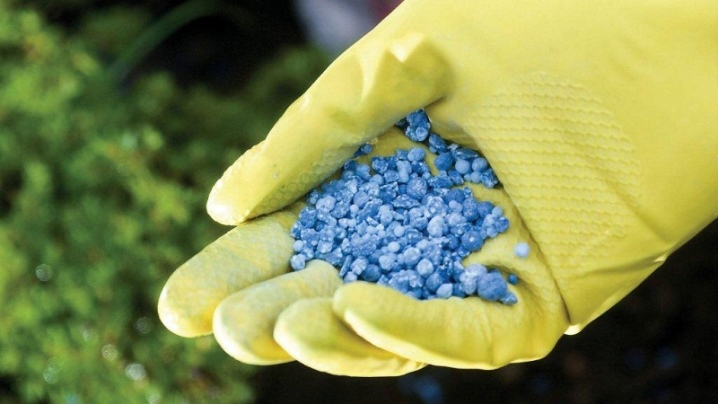
Nitrogen
These fertilizers are responsible for the development and growth of leaves, as well as the entire aerial part of the plant. They are produced in 4 forms.
- Nitrate. The composition includes calcium and sodium nitrate, in which nitrogen is in the form of an acid that easily dissolves in water. It must be introduced in small doses so that plants cannot accumulate a lot of nitrates, which are too harmful to health. Such dressings are best suited for acidic soils, as well as for plants that have a short growing season. It can be dill, and parsley, and everyone's favorite radish, and salad.
- Ammonium. The composition includes ammonium sulfate - one of the acidic dressings. Such fertilizers are applied most often in the fall, since this substance dissolves in the soil for a very long time. They are great for plants such as cucumbers, onions and tomatoes.
- Amide. This is one of the very concentrated substances that in the earth turns into ammonium carbonate, and it is known to be very necessary for obtaining a bountiful harvest. Such substances can be applied not only under shrubs, but also under trees. In addition, they will not interfere with other plants. However, they should be added to the ground when loosening, or using an aqueous solution for irrigation.
- The ammonium nitrate form or, in other words, ammonium nitrate is also an acidic substance. Unlike ammonium, one part of this feeding quickly dissolves in water and easily moves in the ground, but the second part acts very slowly. The most commonly used food for plants such as beets or carrots, as well as potatoes and some crops.
In any case, all nitrogen fertilizers should be applied in several steps. In addition, you must follow all the recommendations and instructions that are written on the packaging.
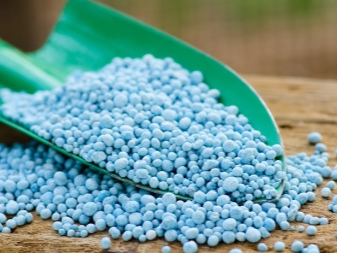
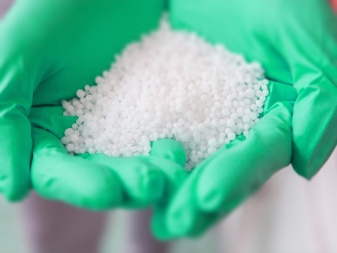
Phosphoric
These substances support the root system of plants, as well as the development of flowers, seeds and fruits. It is much easier to add such top dressing while digging the soil. This can be done both in autumn and early spring. Some phosphate fertilizers dissolve rather poorly in water. It is worth considering several main types of such dressings.
- Regular superphosphate. It belongs to water-soluble fertilizers. It contains components such as sulfur and gypsum, but the amount of phosphorus is about 20%. This substance can be used for different soils - both under trees and under small bushes.
- Double superphosphate also has the ability to quickly dissolve in water. In addition to 50% phosphorus, the composition also contains sulfur. You can fertilize both bushes and trees.
- Phosphate flour is a poorly soluble fertilizer, which contain about 25% of phosphorus.
In addition, unlike the previous substances, it can only be introduced into acidic soils.
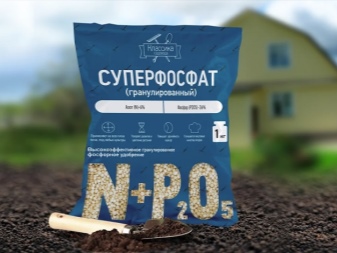
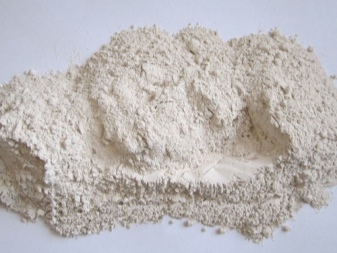
Potash
These fertilizers enhance the movement of water in the plant itself, add stem growth, prolong flowering, and also affect the fruiting itself. In addition, the period of preservation of ripe fruits is significantly increased. It should be noted that potash dressings are rarely used independently. Most often they are combined with other fertilizers. They are of several types.
- Potassium chloride is a natural fertilizer obtained from potash ores. This substance has a dual effect. First of all, it contains chlorine, and it is known to be very harmful to certain garden plants.But at the same time, potassium chloride is a pantry, which contains a large number of valuable components, and they are extremely necessary for feeding various crops. In order not to harm the plants, it is best to apply this fertilizer in late autumn. Thus, by the spring, the "dangerous" part of the feeding will have time to wash out. They can be used for potatoes, grains, and even beets.
- Potassium salt identical in action to potassium chloride. Its only difference is that the composition contains components such as cainite and sylvinite.
- Potassium sulfate - one of the few types of fertilizers that is suitable for almost all plants, in particular, for root crops.
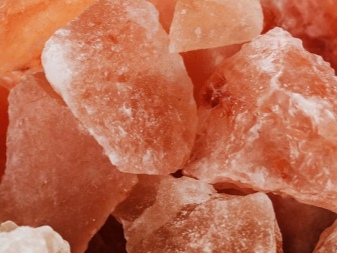
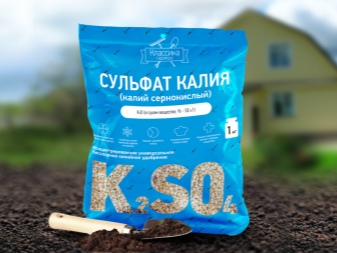
Complex
The combination of several types of fertilizers allows you to give the plant everything it needs at the same time, without harming it. Several substances should be referred to as complex ones.
- Nitroammofoska - one of the complex fertilizers, which contain 16% nitrogen, phosphorus and potassium, as well as 2% sulfur. This combination of components can be suitable for all plants, and can also be used on any soil.
- Ammophos It is a fertilizer that contains neither nitrates nor chlorine. As for nitrogen, it is about 52%, and phosphorus - about 13%. Most often it is used for feeding shrubs and trees.
- Nitrophoska consists of three types of fertilizers: about 10% phosphorus; about 1% potassium; 11% nitrogen. This substance is the main food for all plants. However, one should also know that on heavy soils it is worth bringing them in in the fall, but on light soils - in the spring.
- Diammofoska suitable for all plant groups. It contains about 10% nitrogen, 26% phosphorus and 26% potassium.
In addition, this fertilizer also contains a large amount of trace elements.
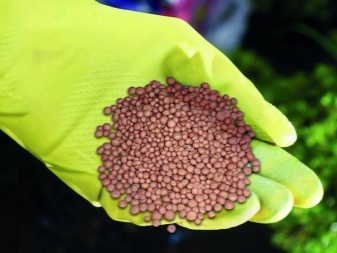

Microfertilizers
The description of these mineral fertilizers would be incomplete without one more group of such substances. They include a number of trace minerals such as zinc, iron, iodine and many others. It is best to use them to process the seed, while strictly following the instructions.
With their help, the plant protects against various diseases, strengthens the immune system, and also increases productivity.


By release form
In addition to the constituent part, fertilizers can also be distinguished by the form of release.
- Liquid minerals quite convenient to use, because each person will be able to independently calculate the dosage. Such fertilizers can be both universal and intended for a single plant. Their only drawback is their high cost.
- Granular minerals are made in the form of granules or crystals, and sometimes in the form of powder. They are best used as a dressing, but they can also be dissolved in water. Their main advantage is low cost and high concentration. The disadvantages include the complexity of their storage - the place must be dry.
- Suspended mineral substances are highly concentrated. They can be obtained on the basis of phosphoric acid, as well as ammonia, to which colloidal clay is necessarily added. This fertilizer is considered basic.
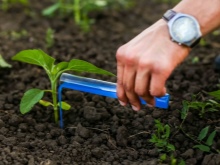
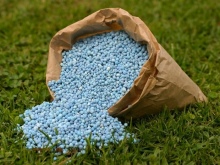
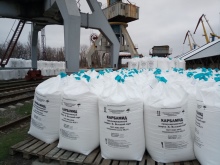
Manufacturers
Over the past few decades, trade in mineral fertilizers has become especially competitive and consolidated on the world market. Several countries are the leaders in the production of these substances. Thus, 21% of all production is controlled by China, 13% belongs to the United States, 10% belongs to India, and 8% belongs to Russia and Canada.
The following manufacturers are considered the most popular in the world market:
- PotashCorp (Canada);
- Mosaic (USA);
- OCP (Morocco);
- Agrium (Canada);
- Uralkali (Russia);
- Sinochem (China);
- Eurochem (Russia);
- Koch (USA);
- IFFCO (India);
- PhosAgro (Russia).
In Russia alone, 6 large companies are engaged in the production of mineral fertilizers. Thus, the supply of nitrogen substances is controlled by Gazprom.In addition, PhosAgro is considered one of the largest companies in the country for the production of phosphorus-containing fertilizers. Plants have been opened in various regions of Russia, for example, in Cherepovets, in Kirovsk, in Volkhov and many others.
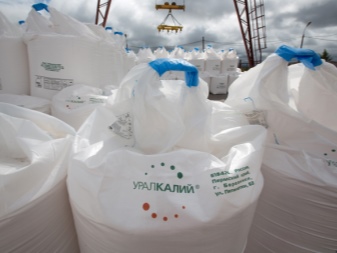

When is the best time to deposit?
The choice of the timing of the introduction of minerals depends not only on the chosen fertilizer, but also on the plant itself. This can be done both in the spring and in the fall for digging directly into the soil. In the spring, fertilization can be done in three ways.
- In the snow. As soon as the snow begins to melt, the selected substances should be scattered over the crust. It will be easy and simple to do this, but this method has the smallest effect.
- When sowing. This fertilization option is considered the most effective. After all, all the nutrients go directly to the root system.
- When planting seedlings. This method is rather difficult and risky, since here you must not be mistaken with the dosage.
And you also need to remember about all the restrictions for different cultures.
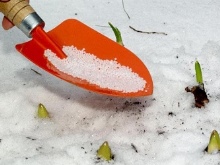
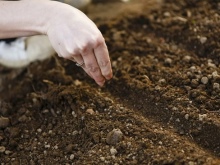

How to calculate the dosage?
The application rates of minerals for a particular plant differ significantly. In order to calculate everything correctly and comply with agrotechnical requirements, it is worth considering several factors, such as:
- soil condition;
- cultivated crop;
- previous culture;
- expected harvest;
- number of waterings.
Agrochemistry deals with all this. However, each person can independently calculate the amount of this or that substance by applying the formula and making his own table: D = (N / E) x 100, where “D” is the dose of the mineral substance, “N” is the rate of fertilization, “ E ”- how many percent of the nutrient is in the fertilizer.


For example, a gardener needs to apply 90 grams of nitrogen to an area of 10 m2. To do this, you can use urea, in which the percentage of nitrogen is 46. Thus, according to the formula, 90 must be divided by 46 and multiplied by 100. As a result, the number 195 is obtained - this will be the amount of urea that must be applied to this area. This formula is suitable not only for fruit trees, but also for lawns or flowers.
However, if it is difficult to make such a calculation yourself, then you can use a universal formula that is used by almost all gardeners and gardeners. In this case, "N" is nitrogen, "P" is phosphorus, "K" is potassium, for example:
- for early plants that have a short growing season, the formula will be as follows - N60P60K60;
- for all medium-yielding vegetable crops such as tomato, potato, squash or cucumber, the formula will look like N90P90K90;
- for plants with high yields, such as carrots or Brussels sprouts, the formula is N120P120K120.
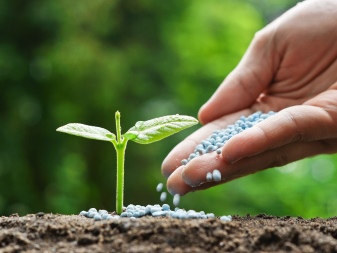
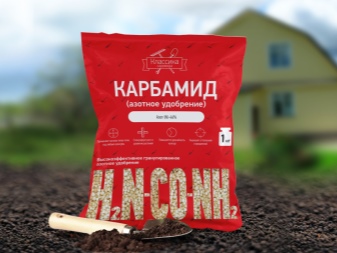
In the event that organic fertilizers are used, the rates will need to be slightly reduced. If feeding is done for indoor plants, very little fertilizer is required. You can measure the required substances without scales, for example, using an ordinary matchbox. Here are the dosages for some of the most popular fertilizers:
- urea - 17 grams;
- potassium chloride - 18 grams;
- ammonium and ammonium nitrate - 17 grams each;
- superphosphate - 22 grams.
If all the calculations are done correctly, the gardener will be able to get what he wants in the same year.
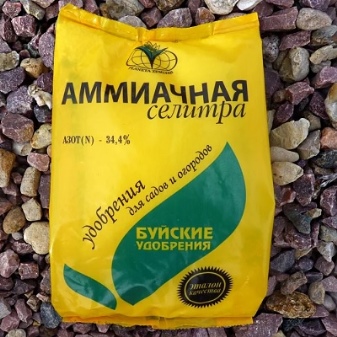
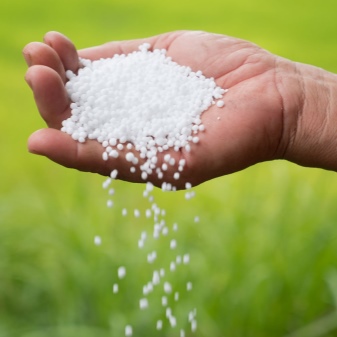
General recommendations for use
So that mineral fertilizers do not harm the plant, as well as the person, it is necessary to adhere to certain rules of application.
- It is best to apply them near the root system of the plant, for example, you can make small furrows.
- If fertilizers are applied by spraying or watering, then the concentration of the solution should not exceed one percent. Otherwise, burns may occur.
- It is imperative to do top dressing in a certain sequence. At the very beginning, nitrogen fertilizers are applied, then phosphorus fertilizers, and only after the fruits or tubers appear - potash.
- All substances must be measured and mixed thoroughly.
- It is worth following all the rules for storing mineral fertilizers. On each package, the manufacturer must indicate how long the substance should be stored closed and open.
Summing up, we can say that mineral fertilizers are an excellent alternative to organic fertilizers, especially if you follow all the rules for use.

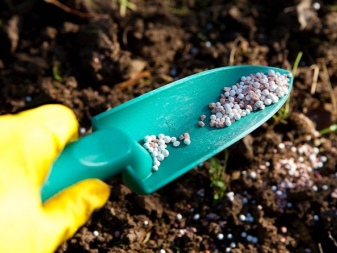
For information on how to choose the right mineral fertilizers, see the next video.













The comment was sent successfully.